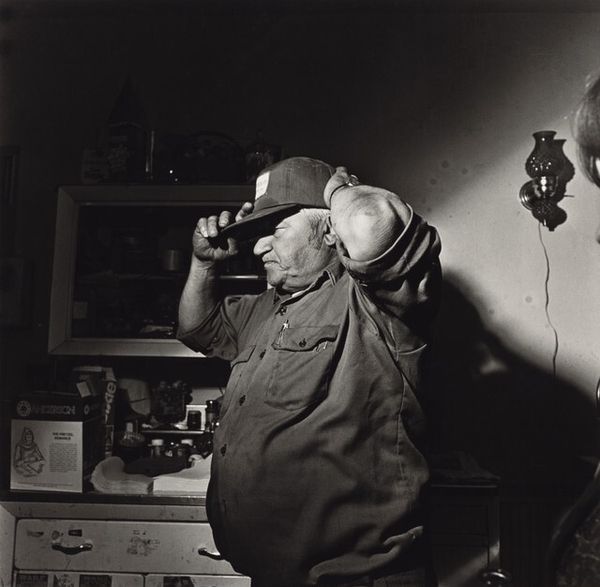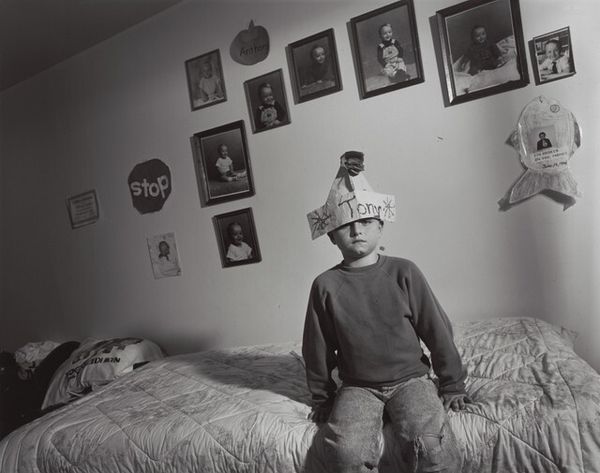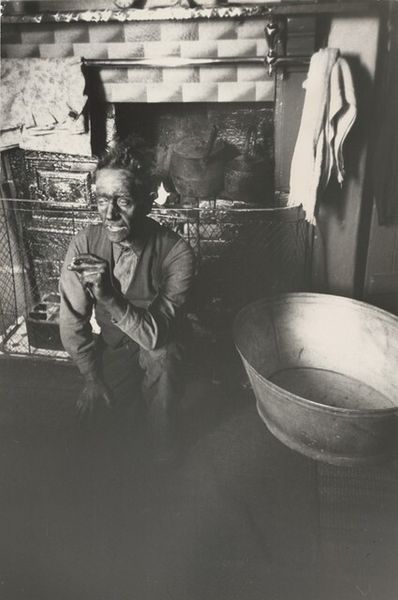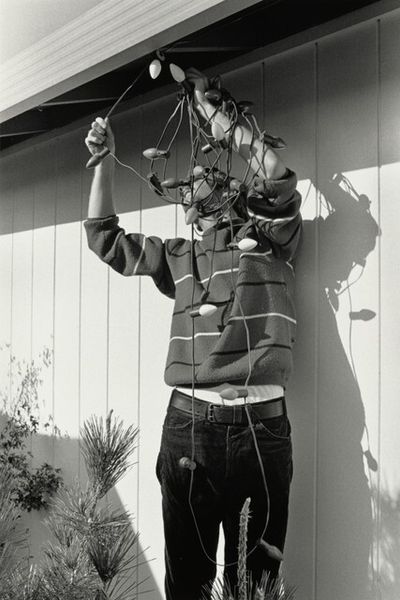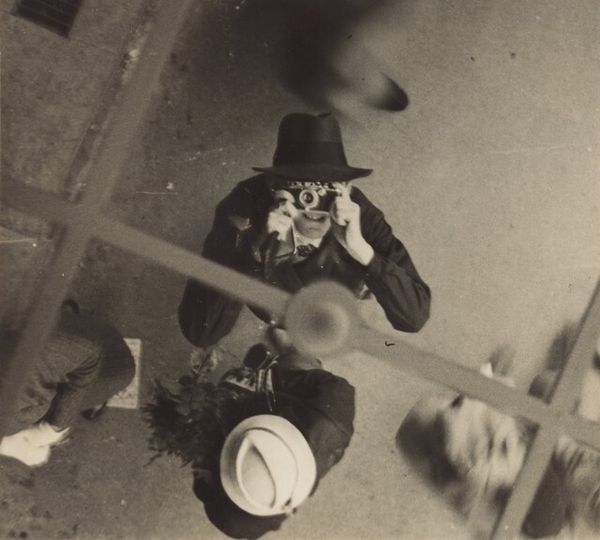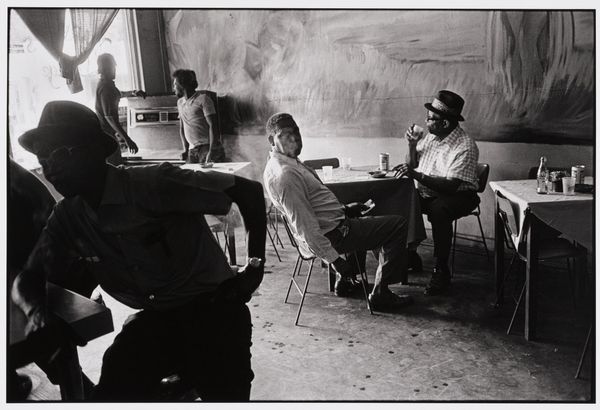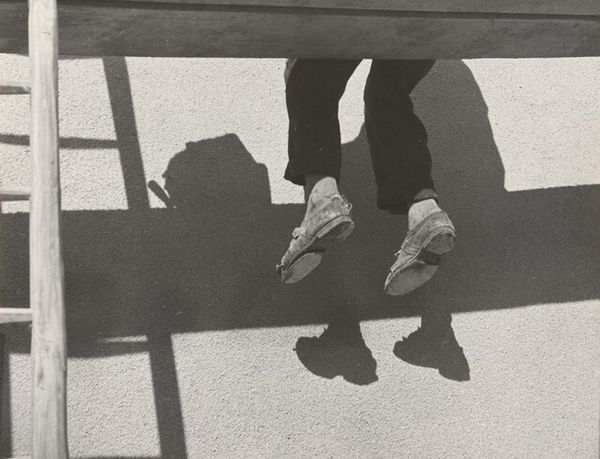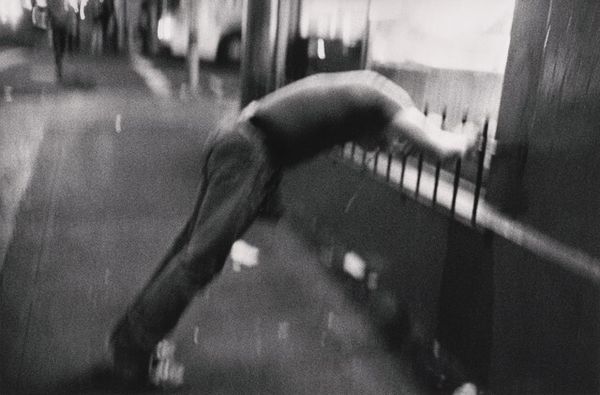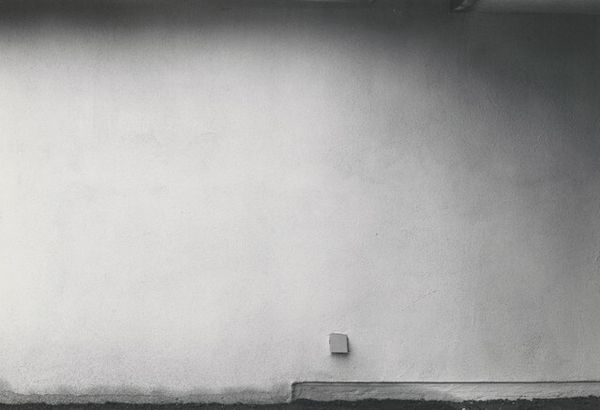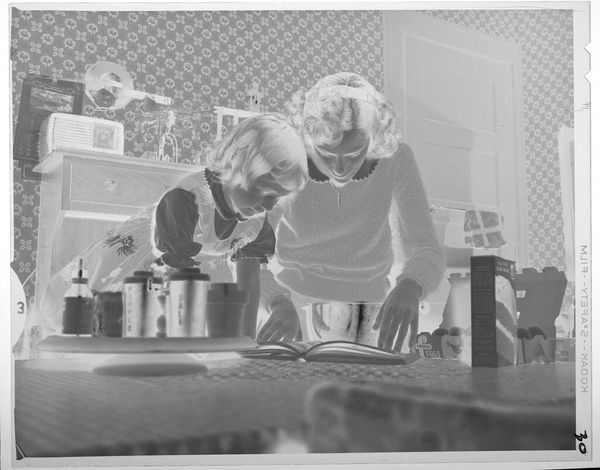
photography
#
portrait
#
black and white photography
#
portrait
#
postmodernism
#
street-photography
#
photography
#
monochrome photography
#
street photography
#
realism
Dimensions: image: 80.01 × 80.01 cm (31 1/2 × 31 1/2 in.) sheet: 108.59 × 101.6 cm (42 3/4 × 40 in.)
Copyright: National Gallery of Art: CC0 1.0
Editor: So, here we have Rosalind Solomon's "New York," a black and white photograph from 1987. There's a really striking sense of vulnerability about this man perched on what looks like a fire escape. What do you see in this piece, considering its historical and social context? Curator: Well, immediately, it speaks to the tradition of street photography documenting the urban experience, especially prominent in New York. Solomon often engaged with marginalized communities, and the image raises questions about visibility, power, and the photographer's role in shaping narratives. Look at the subject’s pose; it is both casual and performative. Do you think that challenges typical portrait conventions? Editor: Definitely! It’s like he’s both revealing something and guarding something simultaneously. His direct gaze adds a layer of complexity. Curator: Exactly! The architectural backdrop isn't neutral; it reinforces the subject's social position within the urban environment. The fire escape, typically associated with safety and escape, here frames him, creating a sense of confinement. How does that interplay with the broader socio-political environment of New York in the 80s, with issues like inequality and social unrest brewing under the surface? Editor: That makes a lot of sense. I didn't think about the fire escape having more than just a literal purpose! It reframes my perception of the whole photo. Curator: Solomon's work is powerful precisely because she invites us to grapple with these ambiguities and power dynamics inherent in the act of representation. This piece exists within the historical context of art becoming more community-oriented. Editor: This was incredibly insightful. I’ll never look at a black and white portrait the same way. Thank you for sharing your thoughts. Curator: It's a pleasure to share this with you; considering history in context provides art with extra depth.
Comments
No comments
Be the first to comment and join the conversation on the ultimate creative platform.
